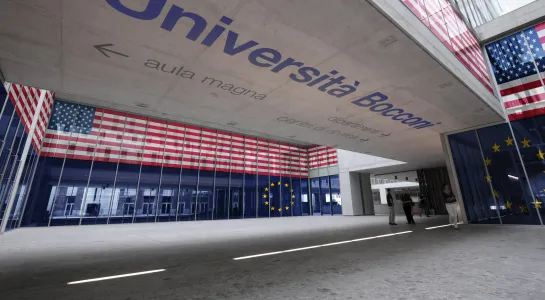
Will the US Have the Best President That Money Can Buy?
Mark Twain famously said about US elections, “We have the best government that money can buy.” Does this also apply to the President? And how much of this money comes from firms? As of April, in the 2024 US election , campaign spending reached almost $8.6 billion, $5.6 billion of which is from political action committees. These PACs often include donations from lobbyists (USAFacts, 2024).
Using data from the Federal Election Commission, we can also track expenditures by the candidates themselves. Candidates have spent $1.1 billion, while party committees have disbursed $545.8 million. As of the end of August 2024, President Joe Biden had raised over $690 Million; Vice President Kamala Harris had raised $630 Million; Donald Trump had raised $313 Million (FEC, 2024).
This shows that presidential campaigns are increasingly expensive and heavily influenced by organized interests, including lobbyists who contribute through PACs and other channels.
While US Presidents often present themselves as independent of political interest groups, research by Professor David Ryan Miller of American University shows that they do engage with lobbyists and interest groups, often initiating these meetings when there is political benefit, such as legislative support or public mobilization. Using visitor logs from the Clinton and Obama administrations, along with data on lobbying expenses, Professor Miller investigates which groups are granted access to the President or senior advisors.
While both resource-rich and less-resourced groups may be engaged, the White House favors groups that align with the President’s agenda and have significant resources, such as expertise or funding for campaigns. Thus, it is clear that both during campaigning and once in office, US Presidents typically court interactions with resource-rich partners.
Assessing whether and how firms lobby and financially support various presidential candidates is more difficult.
First, the share of large, publicly listed firms that lobby in the US is relatively low: about 10%. This fact has been documented by Professors William Kerr (Harvard Business School), William Lincoln (Claremont Mckenna College), and Prachi Mishra (Ashoka University).
Second, while CEOs have been pushed to take a stand on publicly controversial issues, and some CEOs are vocally choosing sides in the US election, firms tend to be pragmatic and donate to both sides.
While money plays a big role in politics, the legal channels by which we can track corporate lobbying do not clearly link firms to Presidents.
The EU Lobbying Model
In contrast, lobbying in the European Union (EU) is less focused on elections and more directed toward shaping regulations. Corporate lobbying in the EU has been increasing, with top firms spending €206 million in 2023, up from €90 million in 2015.
Meta topped the list with nearly 200 meetings and over €8 million in lobbying expenses, while other sectors like oil and gas also spent heavily to influence climate and energy policies.
Many firms lobbying the EU are not even based in Europe but seek to influence regulations that impact their global operations due to the EU's regulatory power, a phenomenon known as the "Brussels Effect."
Not coincidentally, much of the money was spent by tech firms as this was also when the European Commission was discussing regulations pertaining to the Digital Markets Act. Similarly, the oil and gas sector alone spent over €250 million between 2010 and 2019 lobbying EU institutions to influence climate and energy policies.
Thus, unlike the US where spending often occurs around individuals that interest groups and individuals would like to have in office, in the EU lobbying tends to be around regulations. Interestingly, many of the biggest spenders are not EU based firms, but those headquartered elsewhere. So why are they lobbying the EU?
What is as well-documented as the “Brussels Effect” is the fact that the EU regulates much of the Western business world. Thus, globally-active firms have reasons to know and try to influence legislation in the EU. While in the US, corporate lobbying is presumed to be about influence, in the EU, we expect firms to primarily lobby to gain access to information and influence legislation.
My co-authors and I assess the extent to which this is true in an ongoing project as part of a grant I won from the CARIPLO Foundation. Using the Transparency Register and data from Integrity Watch, we track meetings between firms and EU Commissioners and Parliamentarians.
All EU commissioners and their staff as well as MEPS and their staff must report all meetings with firms, lobbyists and trade associations while they are in office. We link the names of firms that are meeting regulators to assess various trends.
Overall, we see that just about 6% of publicly listed firms in Europe meet regulators – with high representation by German, UK, Swedish, Dutch and French firms, and relatively low by Italian and Spanish.
Moreover, we see an increase in lobbying by firms whose industries are affected by upcoming EU proposals. For instance, since the von der Leyen Commission came to office in 2019, there has been an increase in lobbying by firms from high carbon output industries. Ongoing work will further break down differences by industry, country and regulator.
Overall, while corporate lobbying plays a major role in both US and EU politics, the focus differs. In the US, it revolves around election-related spending and influencing individual politicians, while in the EU, lobbying is more concentrated on shaping regulations.

